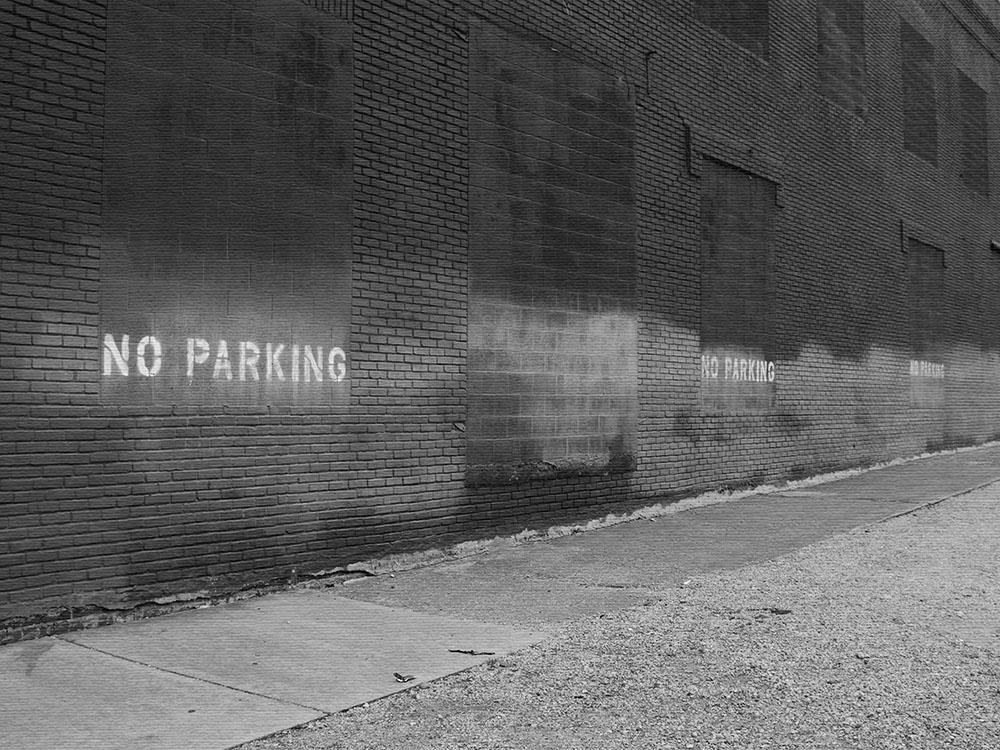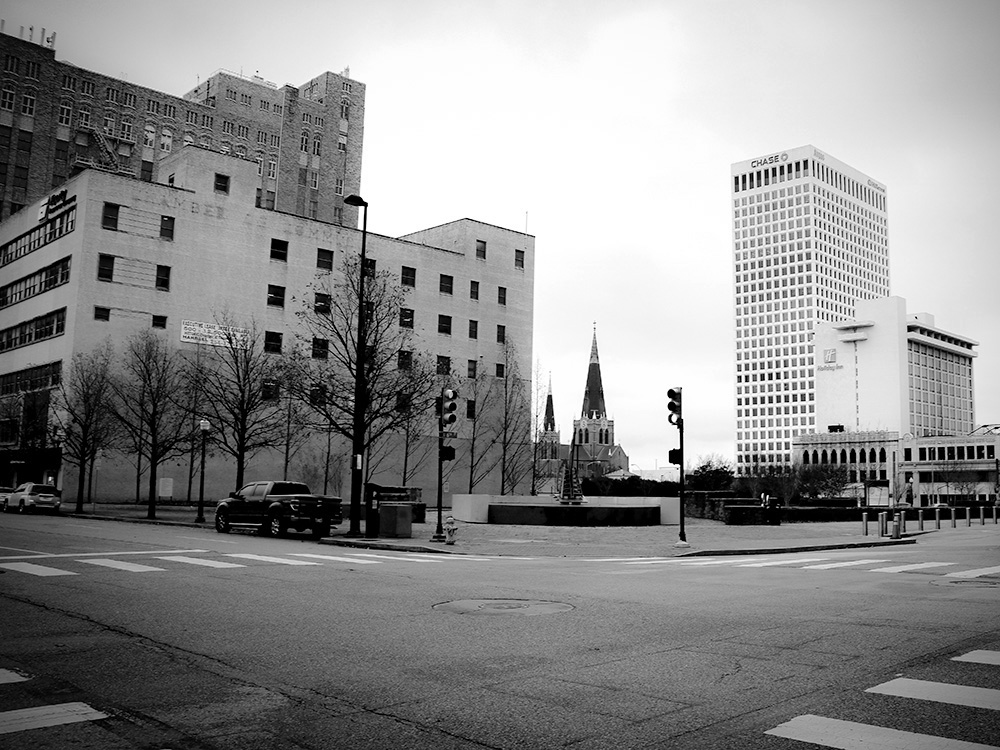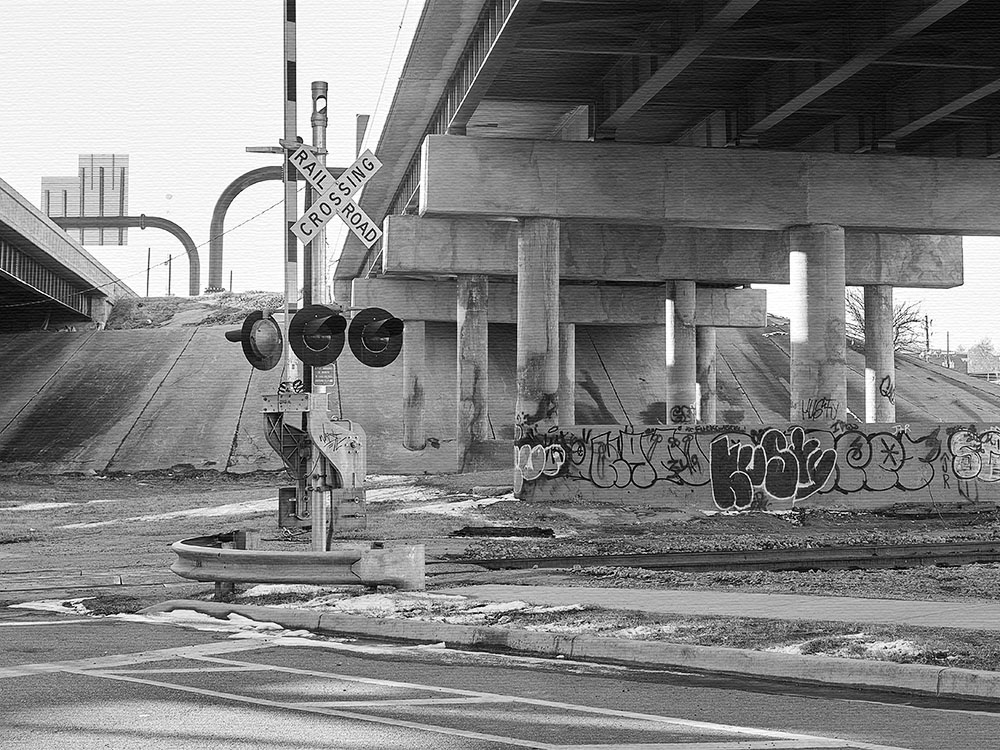These are not photos that you will find on postcards in a souvenir shop, but they reflect realities of Tulsa as many people see and experience the city.
In our mind's image of Tulsa there are two points on which we focus. One is our own neighborhood. This is what best represents the city to each of us because it is where we live and it is the Tulsa with which we most identify.
The other focus is on iconic landmarks that we have been trained to see as symbols of our community. These are places we show visitors from out of town: "Look! …This is the city of which we are proud.""
Both are valid ways of seeing Tulsa, but they leave us with a picture that is incomplete. Unless we look at the details around us that we typically overlook, unless we travel beyond familiar places, we are missing important stories waiting to be uncovered.
This collection of photos is an example of things we may see but may not notice. To find these scenes we will need to travel beyond the parts of the city we frequent, but doing so will reveal other sides of Tulsa ready for our discovery.

Prof. Rodger Randle

Downtown as seen from North Lawton Street.
For most of us, downtown is a place where we feel comfortable and at home. It is full of people like us. For others, however, downtown and its businesses, bars, and restaurants are distant and unreachable. A barren divide of privilege separate them from the downtown you and I know.

Abandoned homes near downtown.
These houses were part of a vibrant working-class neighborhood when I was young. It was a neighborhood full of bustle and optimism, but now destroyed by municipal policies prioritizing the needs of automobiles over the needs of people. These houses, standing alone in an area almost completely cleared of other buildings, are all that remain of what were once family homes.
Now they await the arrival of the bulldozer. The families that called these houses home left long ago.

Vacant manufacturing buildings.
Tulsa was once an important manufacturing center serving the petroleum industry. Circling downtown are the carcasses of once prosperous businesses that provided good paying working class jobs.
In the foreground of the photo is the shadow of the I-244 inner dispersal loop. Tens of thousands of people pass this scene of industrial desolation every day.
It is one of many such scenes surrounding downtown.

A warehouse near the BOK Center.
No parking? No problem!
Nobody is coming or going anymore. The building is vacant.
The windows and loading gates of this building have been bricked over, but it is easy to see where there was once life. Remnants of our industrial past are found all around downtown, reminding us of the economic life we once enjoyed.

warehouse on the edge of the Arts district.
The tall arches on the one side of the building accommodated the unloading of rail cars. On another side of the building (not visible in the photo) loading docks allowed for the transfer of goods to trucks for local delivery. This building was an important distribution center supporting the oil business. Today it is empty. The dark colored brick building on the other side of the viaduct at the back of the photo is a luxury apartment building, inhabited mostly by young people attracted to the "authenticity" of the old (and faux-old) buildings in the Arts District. They are rebelling against the uniformity and sameness of planned suburban housing developments and the monotony of suburban strip centers.

a park in the center of the city.
Downtown is a place full of dead spaces. In this case the dead space is a "park", but a park that drives people away rather than welcoming them. People avoid empty spaces like this one. At one time downtown Tulsa was lively. Walking down the street was interesting, it was a place to run into friends and enjoy a quick reunion. This is true today in parts of the Arts District on the north side of the railroad tracks.

railroad tracks on the eastern edge of downtown
From the beginning of our city's history the railroad played a critically important part in our development. Although not very visible today, extensive trackage still winds through parts of downtown, reminding us of our railroad roots. Railroads are still very much alive in Tulsa, but nowadays less noticed and less appreciated.

an abandoned manufacturing facility on East 6th Street.
When the people leave, the graffiti moves in.
The up-market T.A. Lorton shop, where you can pay $5,000 for a designer chair to sit on, is a short walk down the street. Urban grunge creates a chic ambience for luxury purchases.

a nice afternoon for a nap.
A fuzzy line separates the Arts District from the downtown soup kitchens serving the homeless. This client of the social service agencies has carefully hung his jacket on an available piece of abstract sculpture before settling into a nice after-lunch nap.

under the expressways, near Greenwood and Archer.
For those traveling at high speed across the expressways, the underside of the city is invisible.
Meanwhile, in other parts of Tulsa where the automobile rules supreme...

a section of a strip center near 31st and Yale
Newly built strip centers in far south Tulsa today look modern and attractive, just as this one once did. But strip centers age poorly. Municipal zoning policies favoring the automobile have encouraged the spread of strip centers all across Tulsa, resulting in the visual degradation of a town once called: "America's Most Beautiful City".













